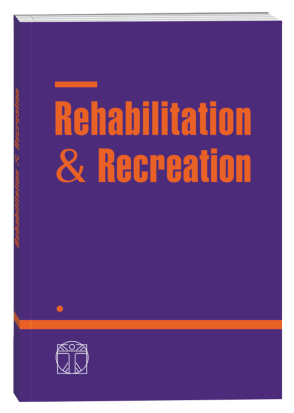DETERMINING THE OPTIMAL WAYS OF MOVING OF THE SHOOTER DURING SHOOTING IN MOTION
Keywords:
practical shooting, moving of the shooter, shooting in motion, expert assessmentAbstract
Practical shooting is a relatively new sport of shooting, the purpose of which is to study and practice exercises that correspond to various cases of the use of firearm. It is have to be taken in account that there are quite a number of ways of moving of the shooter while shooting in motion. Perhaps the biggest difference between practical shooting and other shooting sports is the variety of exercises that are developed and prepared for each competition new (new location of targets, a new set of obstacles and conditions of execution). In this case, most targets (at least 70%) for shooting exercises are located in such a way that they can be hit in motion, ie hit the target while moving, while moving from one shooting position to another and thus gain a significant advantage in time. It should be keeped in mind that the training period is always limited in time, and pay attention to the studying and practicing of all available methods of movement, as a rule, is not appropriate, as it is enough to concentrate on working out the most effective way of moving. Therefore, the question of determining the most optimal way of moving while shooting in motion is quite relevant. The purpose of the study is to determine the most optimal way of moving of the shooter during shooting in motion, which allows the accurate and high-speed shooting. Using the method of expert assessments, the optimal way of moving of the shooter during shooting in motion, which became the "x-shaped" step, was identified.
References
Богородецкий Д.А., Кондрух А.И.Сравнительный анализ построения (конструирования) упражнений на нацио-нальных и международных чемпионатах и турнирах по практической стрельбе. Теория и методика подготовки в практической стрельбе, других стрелковых видах спорта и стрелковых дисциплинах в многоборьях: РГУФКСМиТ, 2017. С. 11-18.
Кашуба В., Аманов К., Синиговец В.Использование биомеханических средств и методов управления устойчивостью системы “стрелок-оружие”. І Международ. конф “Физическое воспитание Туркменистана”, Ашхабад, 1993. С. 51-54.
Кашуба В., Хабинец Т. Методикаприменения специальных технических средств при обучении технике пулевой стрельбы. Современные проблемы совершенствования системы физкультурного образования, Кишинев, 1995. С. 161-162.
Кашуба В. Движения со сложно-координационной структурой и проблемы их освоения в спортивной тренировке. Фи-зическое воспитание студентов творческих специальностей. Харьков. 1999. № 11. С.3-6.
Кашуба В., Хабинец Т. Підвищенняефективності тренувального процесу стрільців-кульовиків на основі біомеханічних ерогенних засобів відставленої дії. Матеріали II Всеукраїнської науково-методичної конференції “Стрілецька підготовка в олімпійському спорті”. Львів. 2004. С. 10-14.
Кашуба В., Данильченко В., Вако І.,Кримець О. З досвіду використання квалиметрії щодо ідентифікації рухових помилок при формуванні техніки рукопашного бою. Вісник Прикарпатського університету. Серія: Фізична культура. 2020 Листоп 03; 35: 42-48.
Кондрух А.И. Терминологическийсловарь по практической стрельбе. М. Спорт, 2017.108 с.
Коротков А.П. Специфика спортивно-прикладной подготовки в практической стрельбе Теория и методика подготовки в практической стрельбе, других стрелковых видах спорта и стрелковых дисциплинах в многоборьях: РГУФКСМиТ, 2015.С. 74-76.
Крючин В. Основы практическойстрельбы. Челябинск: Аркаим, 2006. 264 с.
КиршС. Размышление о практической стрельбе. 2005. 222 c.
Стэгер Б. Навыки и дриллы попрактической стрельбе из пистолета. Владивосток: Полиграф-Сервис-Плюс, 2017. 185 с.
Kashuba, V, Stepanenko, O, Byshevets,N, Kharchuk, O, Savliuk, S, Bukhovets, B, Grygus, I, Napierała, M, Skaliy, T, Hagner-Derengowska, M, Zukow, W. (2020). Formation of Human Movement and Sports Skills in Processing Sports-pedagogical and Biomedical Data in Masters of Sports. International Journal of Human Movement and Sports Sciences, 8(5), 249-257. DOI:10.13189/saj.2020.08051
KashubaV., Andrieieva O., Yarmolinsky L., Karp I., Kyrychenko V., Goncharenko Y., Rychok T., Nosova N. (2020). Measures to prevent functional muscular disorders in sports training of 7-9-year-old football players. Journal of Physical Education and Sport, Vol 20 (Supplement issue 1), 366–371.
Todorova V, Podhorna V, BondarenkoO, Pasichna T, Lytvynenko Y, Kashuba V. (2019). Choreographic training in the sport aerobics. Journal of Physical Education and Sport, Vol 19 (Supplement issue 6), 2315–2321. DOI:10.7752/jpes.2019.s6350
Todorova VH, Pogorelova OO, KashubaVO. (2020). Actual Tasks of Choreographic Training in Gymnatic Sports. International Journal of Applied Exercise Physiology. Vol. 9. No. 6. 225-229.
Downloads
Published
How to Cite
Issue
Section
License

This work is licensed under a Creative Commons Attribution-NonCommercial-NoDerivatives 4.0 International License.











